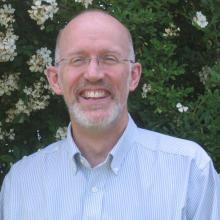“In a well designed building, you open the windows only for fun.” — Arne Elmroth, Professor Emeritus of building science, Lund University, Sweden
“You don’t do anything for fun.” — Anders Olsson, Swedish Building Engineer, retired.
We’re already into Day Five of our Scandinavian saga and this is my first opportunity to take a break and write down some thoughts for a NESEA blog. Our days have been packed full, from breakfast to well after dinner most nights.
We’ve met with a number of prominent policy makers, researchers, architects, developers, and builders, and visited several fascinating projects in Stockholm and Alingsås (home of the Swedish Passive House Center). We’re now in Gothenburg and getting ready to have lunch tomorrow with the architects of the largest Passive House school in Sweden, and then after lunch to visit the school with them and take a look at their way of putting together construction drawings.
Over the next couple of weeks we hope to share a taste of what we’ve been experiencing. For the moment, though, I’d like to focus this initial blog post on a deep energy retrofit of a single-family home just on the south edge of Stockholm that we visited on Wednesday. This is a type of project near and dear to my heart, and I was eager to learn what has happening in Sweden in this regard.
I have to be careful describing this project, lest you get the wrong idea about how well Sweden is addressing climate and energy challenges we face in the coming decade. Let me make this clear: Sweden appears to be addressing those challenges far more effectively and proactively than the United States. I’ll leave it at that for now.
But in many ways the Swedish DER we visited, although extremely interesting, did not represent a significant advance over the single-family home DERs that have been completed in the NESEA region. In fact, it validated a number of my doubts about DERs as a scalable solution to the climate and energy issues we’re facing.
First, the project relied heavily on subsidies. The exterior insulation, new heat pump (replacing a 6-year-old system), and new triple-glazed windows were all donated by manufacturers. Additionally, one of those manufacturers provided a broad range of project documentation and management expertise at no charge.
Second, even with those subsidies, the project team had to search far and wide to find a homeowner willing to undertake the project. Energy prices are not that high in Sweden. Electricity costs about 12 to 16 cents a kWh (one of the lowest prices in Europe). So although most single-family homes are all-electric (using ground-source heat pumps for space heating), there’s just not that much motivation to undergo a big, intrusive project purely for the energy savings. And apart from the regional combined heat and power systems for high-density apartment block developments that still use some fossil fuels, Sweden has very low-carbon electricity—mostly hydro and nuclear, with a growing amount of wind and biomass. So it’s hard to reduce your carbon footprint that much with a single-family home DER.
Third, the project did not address some indoor air quality issues. For one, the garage is tucked under a dining area and bedroom wing, and the project did not place a high priority on isolating those spaces from each other. For another, although the project significantly tightened up the house (it reached 0.8 ACH@50), no make-up air was provided for the cooktop vent hood or the woodstove. The current occupants never use the woodstove so for them the risk is non-existent, but if they move and leave the woodstove in place, future occupants might not be so lucky (when we ran the range hood, lots of air came down the chimney through the woodstove doors).
These caveats, however, do not alter the fact that this is a really interesting project that had a significant impact on the indoor comfort and operating costs of this house. Furthermore, there are some intriguing details about this project that potentially do make it scalable—details that you’ll have to attend our sessions at BuildingEnergy 15 to hear more about.
Stay tuned to read about our visit with a close colleague of Wolfgang Feist who’s implemented an extremely simple, climate-specific Passive House standard in Sweden, and also to find out how many Swedes sitting on toilets it takes to power a Stockholm city bus for a year.
I’ll leave you for now with a few photos of the DER:
Here’s the front façade of the retrofit. The exterior cladding was removed and high-density rock wool panels were applied over the existing sheathing. New exterior board-and-batten cladding was then applied over the insulation. It was very important to the homeowner that the house look exactly the same after the project as it did before.

Sleek Swedish-design range hood that when turned on uses…
this wood stove for make-up air.

Beautiful Swedish-made triple-glazed windows were installed in the existing openings.

Here’s a close-up view (from below) of the rock wool insulation installed behind the cladding.
Our Mission
NESEA advances sustainability practices in the built environment by cultivating a cross-disciplinary community where practitioners are encouraged to share, collaborate and learn.






Add comment